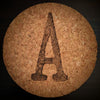Bubbling Through Time: A Journey into the History of Soap Making
Introduction
Soap, a simple yet indispensable product, has been a part of human history for millennia. From its humble beginnings to the modern-day formulations, the history of soap making is a tale of innovation, chemistry, and the desire for cleanliness. Join us on a journey through time as we explore the fascinating evolution of soap making, from its ancient origins to the sophisticated products of today.
Ancient Beginnings
The story of soap making dates back to ancient civilizations, where our ancestors discovered the magic of combining fats and ashes to create a cleansing concoction. The earliest evidence of soap making traces back to the Babylonians around 2800 BCE. They crafted a soap-like substance by mixing fats, such as animal tallow, with ashes from wood fires and water from the River Euphrates. This rudimentary mixture served primarily for cleaning wool and cloth.
Egyptian Elegance
Egyptians, known for their advancements in various fields, took the art of soap making a step further. They introduced fragrant oils and aromatic herbs, transforming soap from a utilitarian product to a luxurious indulgence. These scented soaps were used for both personal hygiene and religious rituals. The Ebers Papyrus, an ancient Egyptian medical text, contains recipes for various cleansing preparations, showcasing the Egyptians' mastery of soap-making techniques.
Roman Influence
The ancient Romans, renowned for their architectural marvels and cultural innovations, also left their mark on the history of soap making. Their version of soap, known as "sapo," was made by boiling animal fats with ashes. Romans used sapo for both personal cleansing and laundering clothes. Soap making became a cottage industry, with different qualities of soap available for different socioeconomic classes.
Medieval Europe and Islamic World
With the decline of the Roman Empire, soap making took on different forms across the globe. In medieval Europe, soap making was primarily the domain of monasteries and became associated with personal purity and spiritual cleansing. Meanwhile, in the Islamic world, soap making flourished as a result of their advances in chemistry and access to high-quality olive oil. The city of Aleppo, in modern-day Syria, became renowned for its production of laurel oil-based soap, which was traded throughout the Mediterranean region.
Industrial Revolution and Modern Innovations
The Industrial Revolution brought about a significant shift in soap making. In the 19th century, the discovery of the chemical composition of fats and oils led to the development of modern soap-making processes. The introduction of sodium hydroxide (lye) in combination with fats led to the creation of hard soap. This innovation paved the way for the mass production of soap, making it accessible to a broader range of people.
As time progressed, soap makers began experimenting with different ingredients, fragrances, and formulations. The 20th century saw the rise of liquid soaps, syndet bars (synthetic detergents), and specialized products for various skin types.
Conclusion
From the ancient Babylonians to the modern-day chemists, the history of soap making is a testament to human ingenuity and the pursuit of cleanliness and well-being. What began as a simple mixture of fats and ashes has evolved into a multi-billion-dollar industry, offering a plethora of products designed to cater to our diverse needs and preferences. As we lather up with the latest scented organic handcrafted soap, let's take a moment to appreciate the centuries of innovation and tradition that have contributed to this everyday essential.

